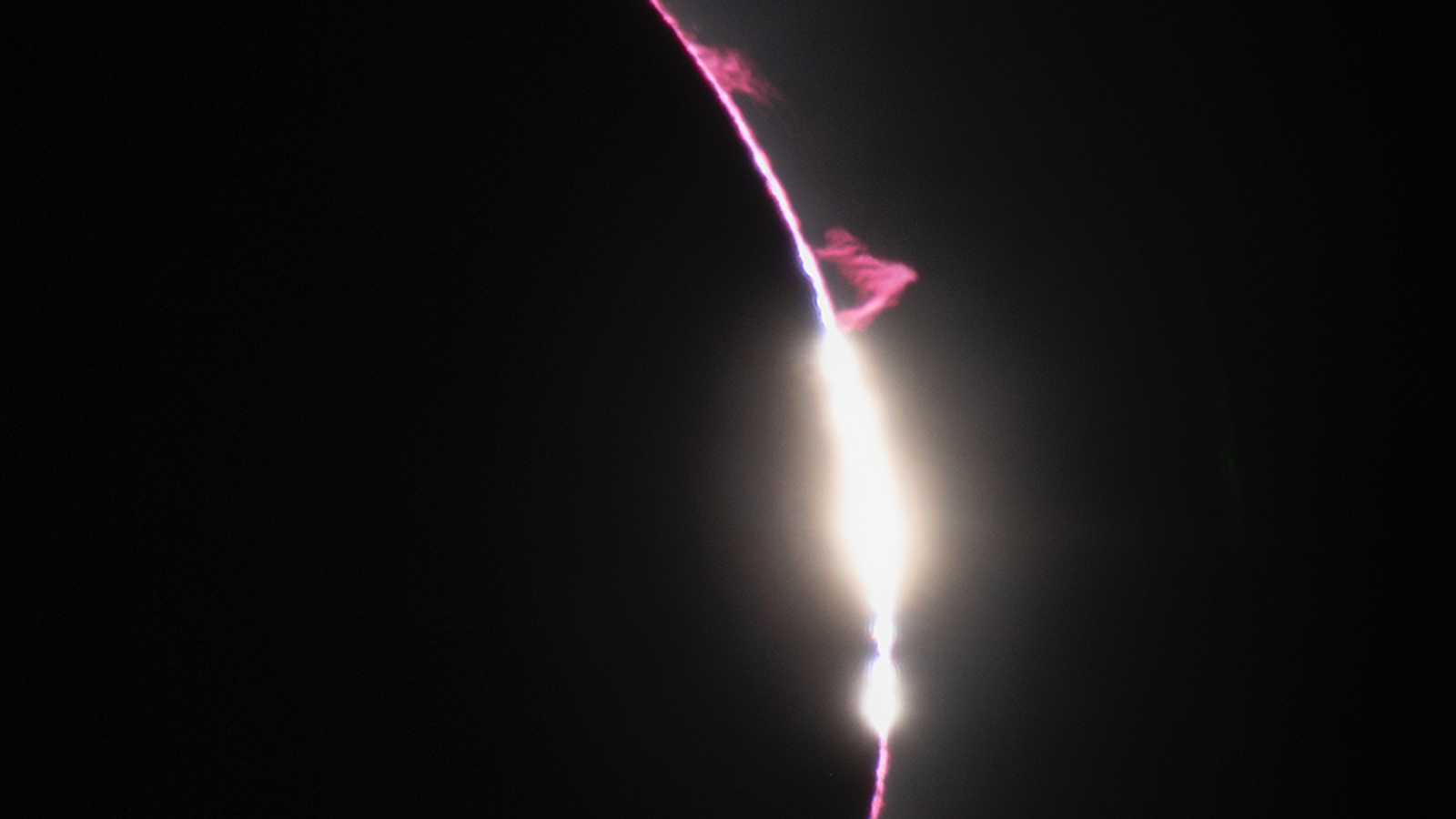No, you didn't see a solar flare during the total eclipse — but you may have seen something just as special
Several media outlets have incorrectly claimed that explosive solar flares were spotted during the April 8 total solar eclipse. But there were no flares during totality, so what did people see?

During the recent total solar eclipse, you may have glimpsed what looked like explosive solar flares bursting from the sun after its fiery corona briefly came into view. But it turns out this was not the case.
However, what you or others may have seen was equally impressive and just as beautiful.
On Monday (April 8), millions of people across North America watched as the moon temporarily blocked out our home star and its shadow raced along the path of totality between Mexico and Canada at more than 1,500 mph (2,400 km/h). The cosmic event, which was also seen from space, was particularly special because of the length of totality — the period when the sun's light was completely obscured — which lasted for up to 4 minutes and 28 seconds.
During totality, some observers saw red dots around the obscured sun. Detailed photos of these dots revealed they were actually plasma, including a particularly large, fiery plume on the sun's southwest limb. As a result, multiple outlets including USA Today and NDTV reported that these fiery structures were produced by solar flares — explosions on the sun's surface that can launch massive clouds of plasma, known as coronal mass ejections (CMEs), into space. Lots of observers also took to social media to share their photos of these "solar flares."
But experts weighed in to point out there were no solar flares during the eclipse.
"There are many (incorrectly) reporting that a solar flare was visible during the total solar eclipse," Ryan French, an astrophysicist at the National Solar Observatory in Colorado, wrote on the social platform X. "This is sadly untrue, and the bright feature seen by millions was actually a prominence. These are longer-lived plasma structures, and not explosive like flares."
Related: When is the next total solar eclipse after 2024 in North America?
Get the world’s most fascinating discoveries delivered straight to your inbox.
Solar activity data backs up French's claim. On April 8, there was just one minor C-class solar flare that ended several hours before totality began anywhere in the U.S., and it did not launch a CME, according to SpaceWeatherLive.com. This flare was also not linked to the large prominences seen during the eclipse.
Unlike solar flares, which eject plasma as they explode from the sun's surface, prominences are plasma structures that remain connected to the solar surface for days or weeks, normally forming a large loop, according to NASA. Prominences can eventually snap and fling plasma into space like a CME, but this didn't happen during the eclipse.
Many people were expecting solar flares during the eclipse because the sun is currently near the peak of its roughly 11-year solar cycle, known as solar maximum. During this period, dark sunspots litter the solar surface and frequently unleash flares and other solar storms as the sun's magnetic field begins to unravel.
However, in the lead-up to the eclipse, the sun became surprisingly inactive with almost no sunspots, which meant the chances of solar flares occurring were greatly reduced. This solar activity lull is only temporary and is expected to pass by the end of the week, according to EarthSky.com.
If you missed the eclipse, don't worry, it is still possible to rewatch NASA's live stream of the event.

Harry is a U.K.-based senior staff writer at Live Science. He studied marine biology at the University of Exeter before training to become a journalist. He covers a wide range of topics including space exploration, planetary science, space weather, climate change, animal behavior and paleontology. His recent work on the solar maximum won "best space submission" at the 2024 Aerospace Media Awards and was shortlisted in the "top scoop" category at the NCTJ Awards for Excellence in 2023. He also writes Live Science's weekly Earth from space series.



